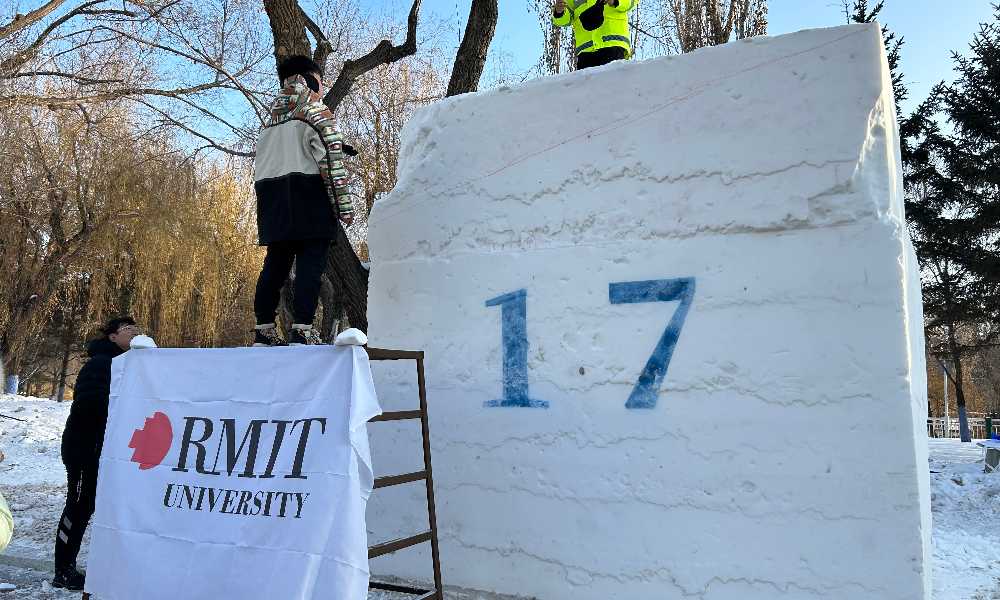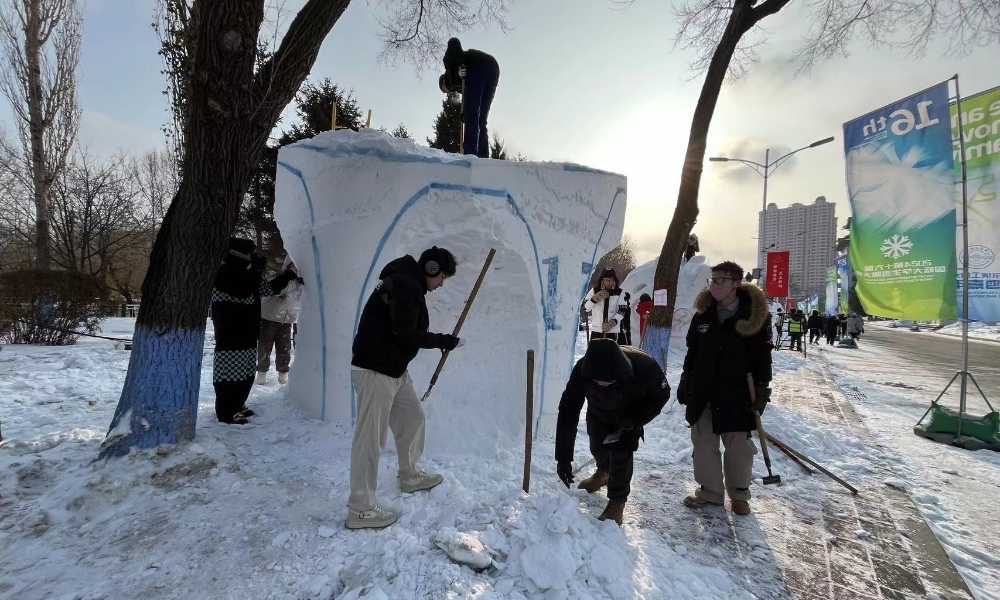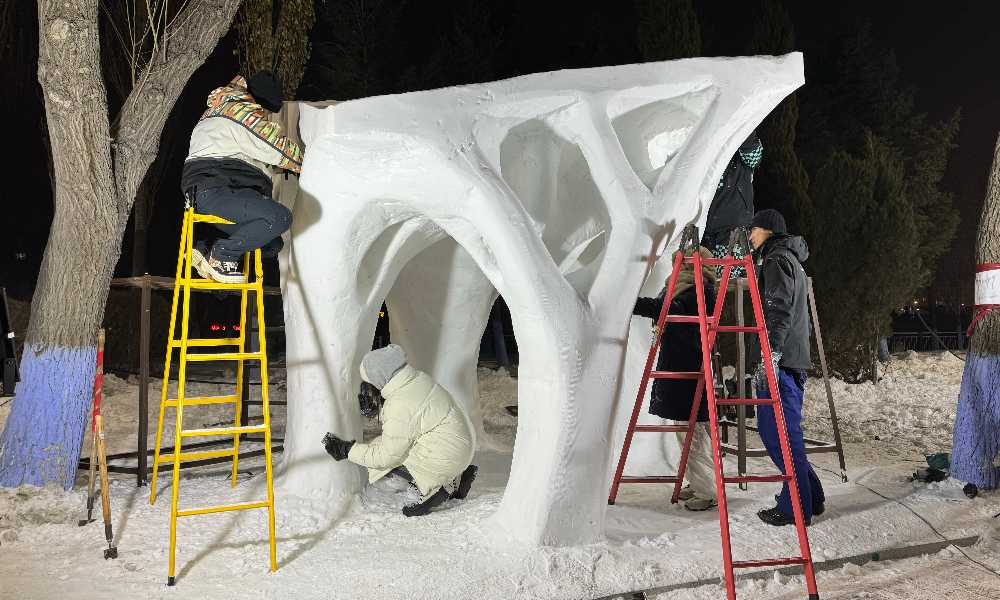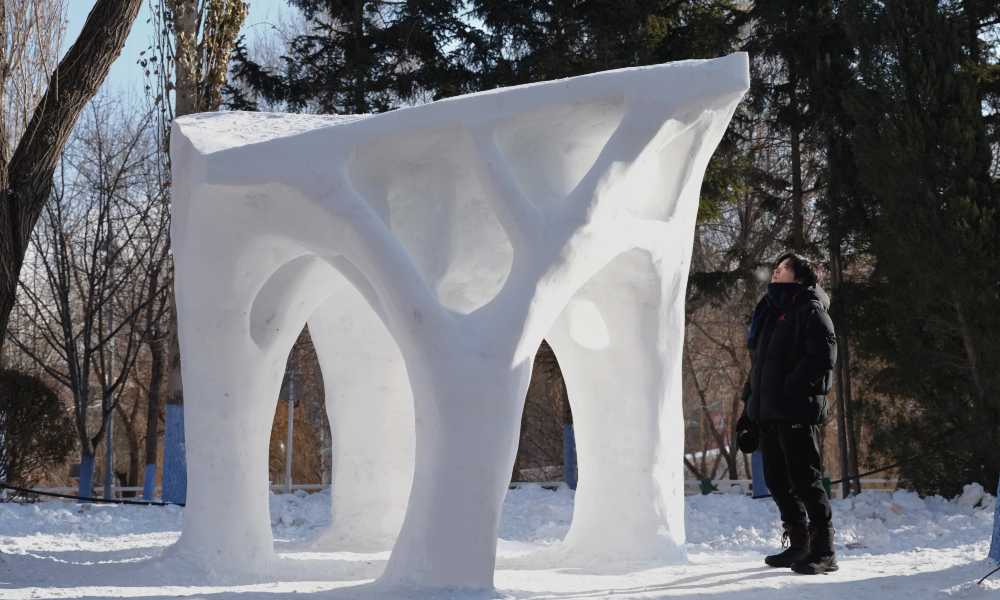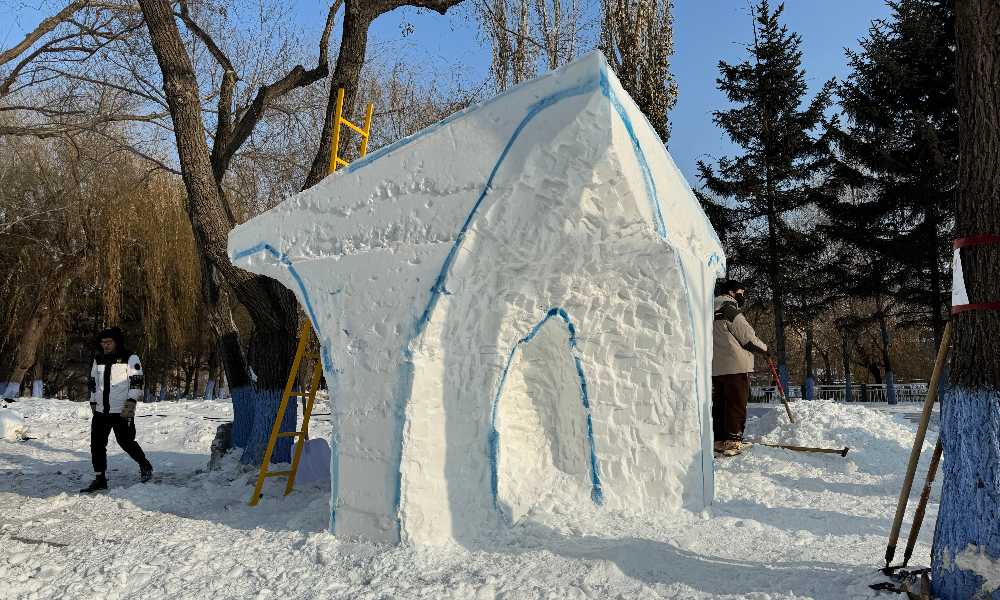Exploring Innovative Spatial Structures through Topological Optimization and Snow Material Integration in Cold Climate Construction, Harbin China, 2024
The project delves into advancements in structural design and construction by employing the generative design technique Bi-directional Evolutionary Structural Optimization (BESO) and natural materials in cold climates. The research specifically focuses on harnessing snow materials to create spatial structures that are not only efficient but also elegant. Snow and ice, occurring naturally in cold climates, particularly in the Polar and Northern Hemisphere, present a unique opportunity for integration into the construction process within specified parameters.
Given its crystal structure, snow is well-suited for compressive structures in sub-zero temperatures, with a density ranging between 400 and 820 kg/m3. The selection of material property values for designing snow structures is contingent upon factors such as temperature, quality, and load, necessitating a case-by-case approach. The distinctive properties of snow and ice materials can be factored into calculations and construction considerations.
The research incorporates topological optimization techniques, widely employed in structural engineering and architectural form-finding, to present an innovative pavilion. This pavilion serves as a tangible outcome, illustrating collaborative efforts between architecture and engineering research groups. The central focus revolves around the application of BESO technology to generate the structure. The design features branches of varying sizes, drawing inspiration from iconic structures such as the interior of Sagrada Familia Basilica by Antoni Gaudi and Shanghai Himalaya Centre by Arata Isozaki. The team manually sculpted the full-scale model of the pavilion at a challenging temperature of minus 25 degrees Celsius, utilizing minimal materials. This meticulous process resulted in a remarkable and innovative structure that captures the essence of nature within the frozen landscape. The key advantages of this novel design and construction methodology lie in the efficient utilization of natural materials and the creation of elegant structural forms.
Led by Senior Lecturer Dr. Ding Wen ’Nic‘ Bao, the team braved -25°C weather in Harbin, China, and manually sculpted a 3 metre, organic, tree-like pavilion structure called “The Castle of Snow”. The team beat out 57 teams from around the globe to win second place at the prestigious 16th International Collegiate Snow Sculpture Contest and Expo!
Publication
D. Bao, X. Yan, Y.M. Xie (2024). Exploring Innovative Spatial Structures through Topological Optimization and Snow Material Integration in Cold Climate Construction, In Redefining the Art of Structural Design -Proceedings of the IASS 2024 Symposium (2024), Zurich, Switzerland, 26-30 Auguest 2024 (abstract accepted, full paper submitted for review)
Key people involved in the project
Design
Ding Wen 'Nic' Bao, Xin Yan and Yi Min 'Mike' Xie
Fabrication
Ding Wen 'Nic' Bao, Yiming Liu (Ethan), Zhengxi Xian (Corliss), Xuye Zhang (Bill), Xinghang Fu (Alfi), Xi Chen (Cynthia), Zhuoran Chen (Amanda) and Da Wang (Iris)
